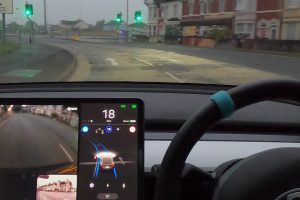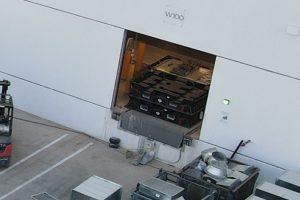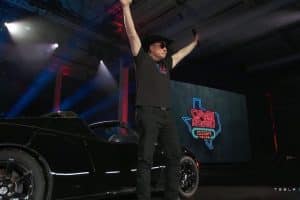There’s a new wave of electric vehicles on the way—GM, Ford, Mercedes, Volvo, VW, Nissan, Renault, Hyundai, and even such humble brands as Mazda, Seat and Dacia all have new plug-in vehicles on the road or in the pipeline. Furthermore, a slew of startups, including Rivian, Lordstown, Aptera, Nikola and Fisker, will soon be debuting a range of exciting EVs.
Whew! It’s almost impossible to keep up with all the new offerings. Many of the new models aren’t destined for the US—China and Europe are where most of the action is. But even here, in the backwater of the automotive world, the number of new electrified vehicles is impressive. According to market research firm AutoPacific, some 90 to 100 new electric nameplates will make it to the US by 2030.
Automakers are pouring massive sums into electrification. GM has announced $20 billion in new investment, Ford has plans to drop $11 billion, and the Volkswagen Group has allocated a whopping $91 billion to its future EV programs. The majors are converting plants to EV-only production, securing supplies of battery cells, and investing in charging infrastructure.
Producing EVs and selling EVs, however, are two different things. Lawrence Ulrich, writing in Car and Driver, feels compelled to dish up a dose of reality. Legacy automakers have been building EVs for a decade now, and sales have been…let’s just say, not up to Tesla standards.
The Nissan Leaf, the world’s best-selling non-Tesla EVs, had sold over 450,000 units as of the beginning of 2020. That might sound impressive, until you consider that Nissan’s best-selling model, the Rogue crossover, was selling over 400,000 units per year until recently (in 2019, it sold “only” 350,000—time for a refresh?).
Other electric offerings have fared far worse. In fact, the vast majority of EVs from legacy automakers have been “compliance cars” that sold a paltry few thousand units each in their brief lifetimes. “Apart from Tesla, no other automaker has delivered a true EV hit, despite a decade of attempts,” Ulrich tells us. “Electric models were lauded as game changers, but the game didn’t change.”
Mr. Ulrich, like the automakers themselves, seems to assume that the lack of sales is down to a lack of consumer interest, ignoring the fact that automakers have done almost no advertising for their EVs, while saturating the airwaves with pitches for gas-guzzling SUVs and trucks (according to the New York Times, automakers devoted only 0.3% of their $8.6-billion ad spend to electric models in 2019). In the case of the compliance cars, it has long been obvious to EV industry observers that the automakers had no intention of selling any more than the handful necessary to satisfy California regulators.
This picture is starting to change. A few of the automakers (notably VW) are gearing up for true mass-market sales, and ad campaigns for electric models are starting to appear. Even now, however, the TV ads shown in the US tend to be abstract, artsy productions that are obviously focused more on general brand-building than on actually selling EVs. (During the recent World Series, GM ran a series of ads for its Hummer EV, a halo car with a six-figure price tag that won’t be available for another year, and none for its only current electric offering, the Bolt EV.)
Meanwhile, Tesla continues to rack up impressive sales while doing no advertising at all. The real impetus for the legacy automakers to produce EVs is government regulation, but Tesla’s salubrious sales and spectacular stock price prove that there’s money to be made, for auto brands that can crack the electric code.
However, it takes money to make money, and it should be plain that the seemingly large amounts of investment that OEMs have announced so far will turn out to be table stakes by the time mass-market production of EVs really gets rolling. The costs of developing new vehicles, retooling factories and building new supply lines are going to be high, and until economies of scale come to the rescue, profit margins are going to be low. According to Car and Driver, analysts estimate that GM was losing around $7,000 on every Bolt sold in 2017. As Ulrich puts it, the legacy brands are going to have to make it through a “money-pit phase” before they are able to compete with Tesla on a more or less equal footing.
This may sound like the “Valley of Death” that every startup must traverse, when the development costs of a new product have to be paid, and sales have not yet begun to bring in revenue. Tesla survived the crossing of that dread valley three times, during the launches of the Roadster, Model S and Model 3. However, a money pit is not as dangerous as the Valley of Death. As Ulrich points out, Big Auto can fall back on financial resources that startups don’t have. “Global giants still have shareholders to appease, but they’re free to develop concept cars, niche cars, halo cars, and even outright bombs without going hat in hand to investors for every new product.”
The automakers that are serious about electrification have all developed flexible platforms that they can use as the basis for many new models (for example GM’s Ultium, Volkswagen’s MEB, which Ford will also use to build an ESUV, and Rivian’s Skateboard). If one model proves a poor seller, or becomes outdated, an automaker can cut its losses and try a new model, without having to reinvent the wheels, chassis and battery pack. As AutoPacific President George Peterson told Car and Driver, “Once you’ve got the platform, it’s not that expensive to put new top hats on it.”
Written by: Charles Morris at EVANNEX; Source: Car and Driver
Want to buy a Tesla Model 3, Model Y, Model S, or Model X? Feel free to use my referral code to get some free Supercharging miles with your purchase: http://ts.la/guanyu3423
You can also get a $100 discount on Tesla Solar with that code. Let’s help accelerate the advent of a sustainable future.





